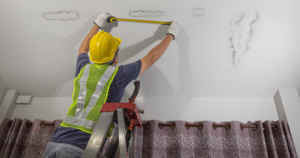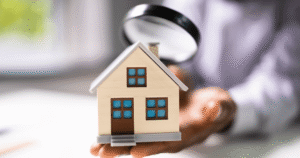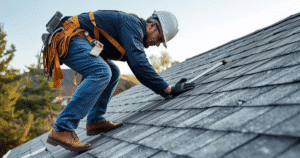• Pigeon infestations can damage roofs; learn to spot early signs and prevent costly repairs
• Step-by-step guide on deterring pigeons, from removing food sources to professional advice
• Common mistakes to avoid in DIY pigeon control and maintenance tips for lasting results
Recognizing the Red Flags: Is Your Roof Hosting Unwanted Guests?
If you’ve noticed an unusual amount of cooing coming from above or find yourself cleaning up bird droppings more often than usual, it’s time to look up and take note. Pigeons are not just a noisy inconvenience; their presence can signal more serious issues for your home. These birds tend to leave a trail of destruction in their wake, from clogged gutters to damaged shingles. Spotting signs early can save you from extensive and costly roof repairs down the road.
Uncovering the Evidence: Signs Pigeons Have Taken Roost
When it comes to pigeons, out of sight should not mean out of mind. Pay close attention to the edges and peaks of your roof, as these areas often serve as prime real estate for pigeon nests. Not to be overlooked, your gutters and drainage systems can also become unwilling hosts to these feathered squatters, leading to blockages and potential water damage. Regular inspections of your rooftop can help you catch these problematic indicators before they escalate.
Pigeon-Proofing: Preventative Measures Are Key
The adage ‘prevention is better than cure’ is particularly apt when it comes to pigeon control. By ensuring there’s no readily available food or water sources, you discourage pigeons from viewing your roof as a suitable habitat. Always secure trash can lids, and if you have outdoor pets, make sure their food is not left out in the open. Remember, a clean and uninviting roof is less likely to suffer from pigeon invasions, saving you time and frustration in the long run.
Action Plan: Safeguarding Your Sanctuary
Dealing with a pigeon problem goes beyond mere annoyance; it’s about safeguarding your home. Your roof is your first line of defense against the elements, and ensuring its integrity is crucial for maintaining the safety of your home. With pigeons capable of causing rapid deterioration, quick action is essential. Early intervention and creating a hostile environment for these birds are the best ways to maintain the longevity of your roof.
Taking the Fight against Pigeons to the Next Level
Once you’ve conducted a thorough inspection and removed any immediate food sources, it’s time to consider stronger preventative measures. Installing physical barriers such as spikes or netting on popular pigeon perches effectively blocks access to these comfy roosting spots. Applying non-toxic chemical repellents can further discourage pigeons from settling on your roof without causing them harm. By combining these strategies, you create multi-layer protection that makes your roof less attractive and inaccessible to pigeon populations.
Step 1: Assess the Pigeon Situation
Begin by observing where and how pigeons are accessing your roof. Look for nesting sites, feeding areas, and patterns of movement. Understanding their behavior will help inform your approach to removing them effectively.
Step 2: Remove Food Sources
Pigeons are often attracted to roofs because of food availability. Ensure there are no food scraps or unsealed garbage cans around your property. If you have a pet, do not leave their food outside.
Step 3: Install Physical Barriers
Use hardware cloth, bird spikes, or netting to block off areas where pigeons roost and nest. Focus on ledges, rafters, and eaves — these are typical roosting spots for pigeons.
Step 4: Apply Pigeon Repellents
Employ non-toxic chemical repellents that are specifically designed to deter pigeons. These can come in gel forms or as sprays and can be applied to areas where pigeons frequent.
Step 5: Set Up Scare Tactics
Make your roof less inviting by using visual deterrents such as fake owls or snakes, reflective tapes, or balloons. Pigeons don’t like unexpected movement so these can help keep them away.
Step 6: Use Sound Deterrents
Ultrasonic devices or noise machines that emit frequencies pigeons dislike can be effective. These devices can be set up on your roof to create an uncomfortable environment for the birds.
Step 7: Maintain a Clean Roof
Regularly clean your roof to remove bird droppings and potential nesting materials. A clean roof is less attractive to pigeons looking for a place to settle.
Step 8: Consult with Professionals
If the pigeon problem persists, it might be time to call in a wildlife control or pest management professional. They can provide more robust solutions tailored to your particular situation.
Avoiding Pitfalls: Common DIY Mistakes in Pigeon Deterrence
When dealing with pigeons on your roof, it’s easy to fall into the trap of thinking that any DIY method will be effective. However, common mistakes can not only derail your deterrence efforts but can also lead to further damage or even legal issues. It’s vital to approach pigeon control thoughtfully, understanding both the methods and the potential missteps.
Mistake 1: Overlooking Local Wildlife Laws
Many regions have specific laws protecting birds, including pigeons. Failing to research and comply with these regulations can lead to hefty fines. Always verify local wildlife protection statutes before attempting any pigeon control measures.
Mistake 2: Using Inhumane or Dangerous Deterrents
Employing tactics that harm pigeons or pose risks to other wildlife and pets isn’t just unethical—it’s often illegal. Ensure that all deterrents, such as spikes or chemical repellents, are designed to be non-lethal and safe for all animals.
Mistake 3: Incomplete Removal of Attractants
Simply shooing pigeons away or temporarily covering roosting spots won’t keep them from returning. Make sure to remove all food sources, seal garbage bins, and avoid leaving pet food outdoors to reduce the food availability that attracts pigeons.
Mistake 4: Improper Installation of Deterrents
It’s not enough to purchase the right deterrents; they must be installed correctly to be effective. Barriers like netting or spikes should cover all possible roosting sites thoroughly, leaving no gaps for pigeons to exploit.
Mistake 5: Neglecting Regular Maintenance
Pigeon control is not a one-time event. Failing to maintain clean and secure roof areas can invite pigeons back. Regularly inspect and clean your roof, and reapply or adjust deterrents as necessary to ensure ongoing effectiveness.
Mistake 6: Underestimating the Problem
Attempting to tackle a large pigeon infestation alone can be overwhelming and often inefficient. If DIY methods fail, it’s important to recognize when to call in professional pest control services to handle the situation effectively.
Maintenance: The Key to Long-term Pigeon Control
A clean roof is a fundamental aspect of pigeon deterrence. Regularly clearing away bird droppings and potential nesting materials will make your property far less appealing to these avian invaders. It’s essential to incorporate roof cleaning into your seasonal home maintenance to prevent any long-term pigeon problems.
Need Professional Help? Ecobuild Roofing is Here
Sometimes, despite your best efforts, pigeons may continue to plague your roof. In such cases, it’s prudent to bring in experts who have experience with residential roofing and pigeon deterrence. They can offer robust solutions and peace of mind that your pigeon woes will be handled professionally and effectively.







